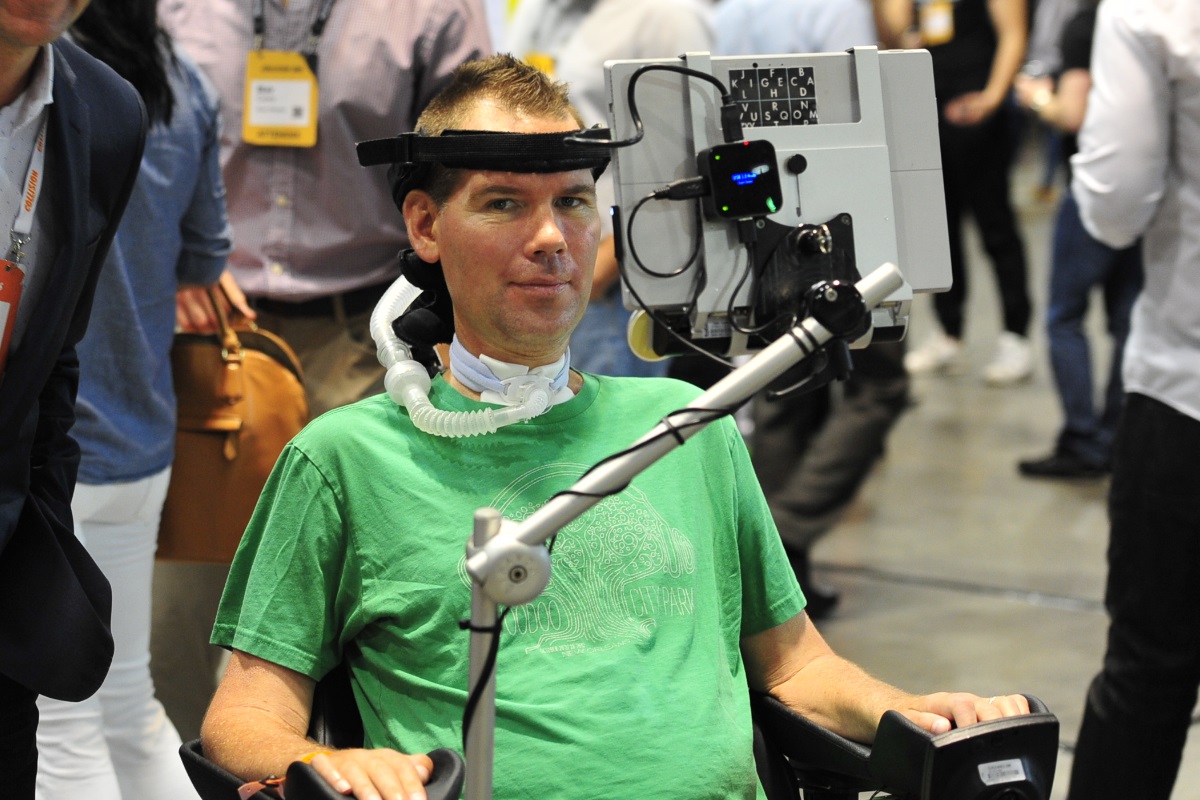New Tools for Patients with ALS

Amyotrophic lateral sclerosis – more commonly known as ALS or Lou Gehrig’s disease – is a disease in the nervous system that both weakens the muscles and impacts voluntary physical functions such as walking, talking, and even chewing.
Cases of ALS in popular culture have been observed through the experiences of figures like Steve Gleason, the late Stephen Hawking, and, of course, Lou Gehrig.
Unfortunately, as we have seen in these cases, there is currently no cure for the disease, nor is there any effective treatment for halting or reversing it. ALS is progressive, meaning that it only worsens over time until a patient’s final days. Worsening symptoms include but are not limited to the following:
- Muscle weakness and/or loss
- Fatigue
- Weight loss
- Muscle twitches
- Difficulty walking and paraplegia
- Difficulty swallowing
- Difficulty speaking
And while there is no cure, there are some solutions to help patients of ALS navigate these symptoms and live the best possible lives that are available to them. With new advances in technology seemingly every day, there are more tools for patients with ALS now than ever before.
Because every patient is different, it remains important that ALS patients try different accessibility options to see which meet their individual needs. Some new advancements and tools for patients with ALS include the following:
Voice amplification
Often times, patients with ALS find themselves no longer able to project their voices due to complications in their respiratory system. Devices made to help amplify the projection of their voices can help to reduce fatigue by reducing the effort needed to speak.
Voice amplification devices are widely available and come in a variety of shapes and sizes. For example, the popular ChatterVox Voice Amplifier can simply be purchased on Amazon. For a price of roughly $225, this device comes equipped with a headset microphone, can boost volume by as much as 18 decibels, and can be comfortably fastened and worn at the front of your waist.
Don’t want to shell out over $200 on a device? Amazon offers lots of alternatives at lower prices such as this VoiceBooster which is available for $85 and has a number of similar features to the ChatterVox. The ALS Association recommends amplification systems that are available commercially through specialty companies like Luminaud.
Smartphone technology
To quote the iconic iPhone commercial from 2009, “There’s an app for that.” Nearly a decade later, the iconic catchphrase couldn’t ring more true. With such significant advancements in smartphone technology, the world is truly in our fingertips. ALS patients that still have hand and finger functions have a number of smartphone options to assist with communication.
Speak It! is a text-to-speech solution app that allows users convert text to speech by highlighting the text and projecting it from their device.
SmallTalk Aphasia is designed to help aphasia patients communicate by providing a vocabulary of selectable pictures and videos that talk in a natural human voice. Because ALS patients similarly lose the ability of communication, they can benefit from the use of this app as well.
Locabulary is another app developed to aid in communication. Words are made available based on a user’s GPS location, allowing them to easily speak the right words in the right place.
Speech-generating devices
Speech-generating devices (SGDs) are not currently covered by a hospice benefit. Because of this, the ALS Association recommends that patients order devices prior to signing on to hospice. Centers for Medicare and Medicaid Services define SGDs as "durable medical equipment that provides an individual who has a severe speech impairment with the ability to meet his or her functional speaking needs."
Depending on the particular device, SGDs can operate in a number of ways including through the use of a patient's’ hands or by reading specific muscle movement. For example the Tobii Dynavoxx T Series offers patients customizable, purpose-built devices designed with any of their specific needs in mind.
Eye tracking technology
As symptoms progress to the point in which most physical functionality is lost, eye tracking technology empowers patients to communicate with the world by doing things such as typing messages and selecting pre-programmed phrases with their eye movement. Like SGDs, these technologies can often be expensive and the ALS Association recommends ordering devices prior to signing on to hospice.
A popular eye tracking system for ALS patients is the Eyegaze Edge, which gives users the ability to control devices like televisions and stereos, surf the internet, send emails, read books, and hold conversations.
For more information about how patients can live their best possible live for all of the time that they have left, learn more about palliative care and neurological hospice eligibility requirements on the Crossroads website. Or you can simply give us a call at 1-888-564-3405.
If you found this information helpful, please share it with your network and community.
Copyright © 2018 Crossroads Hospice & Palliative Care. All rights reserved.



